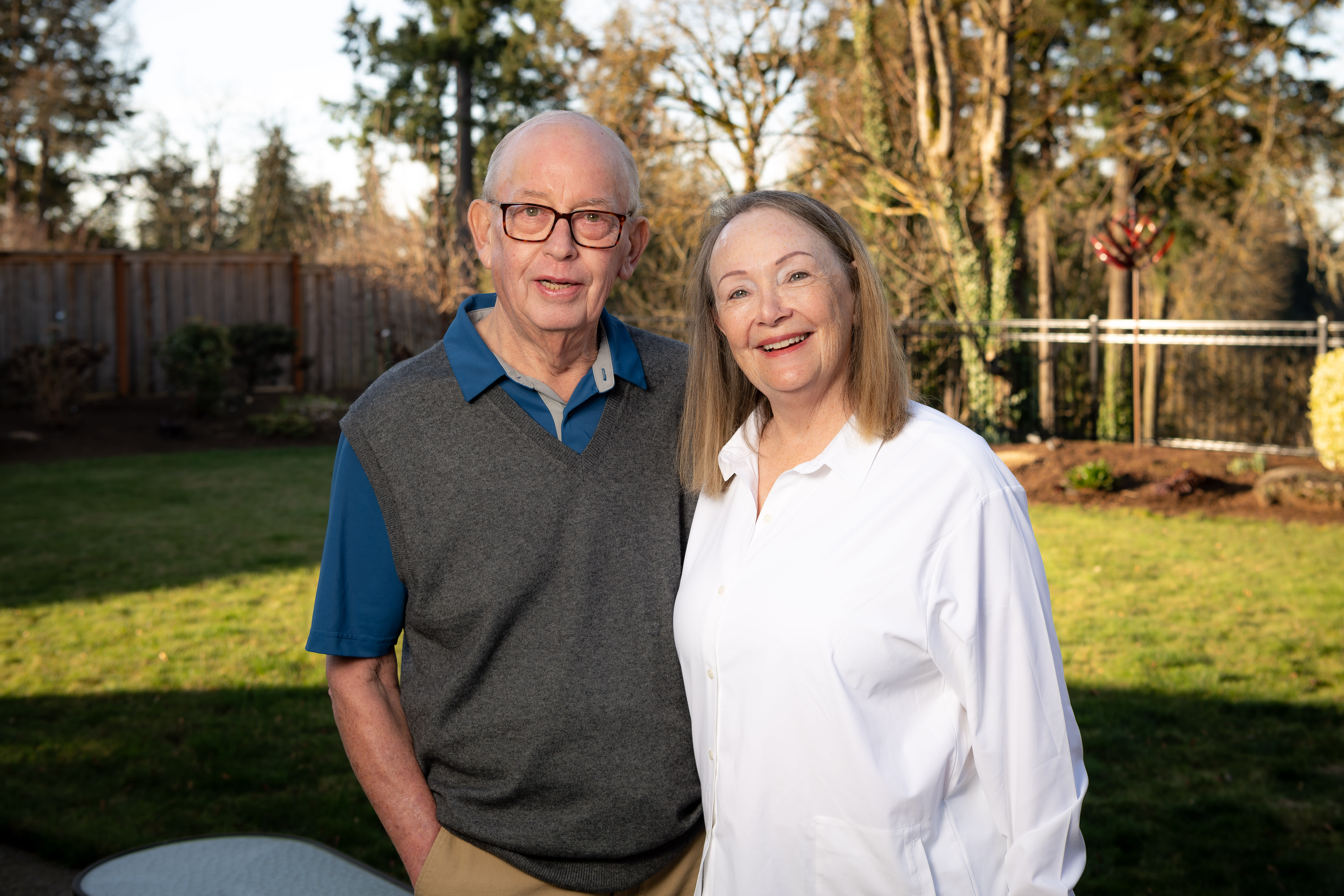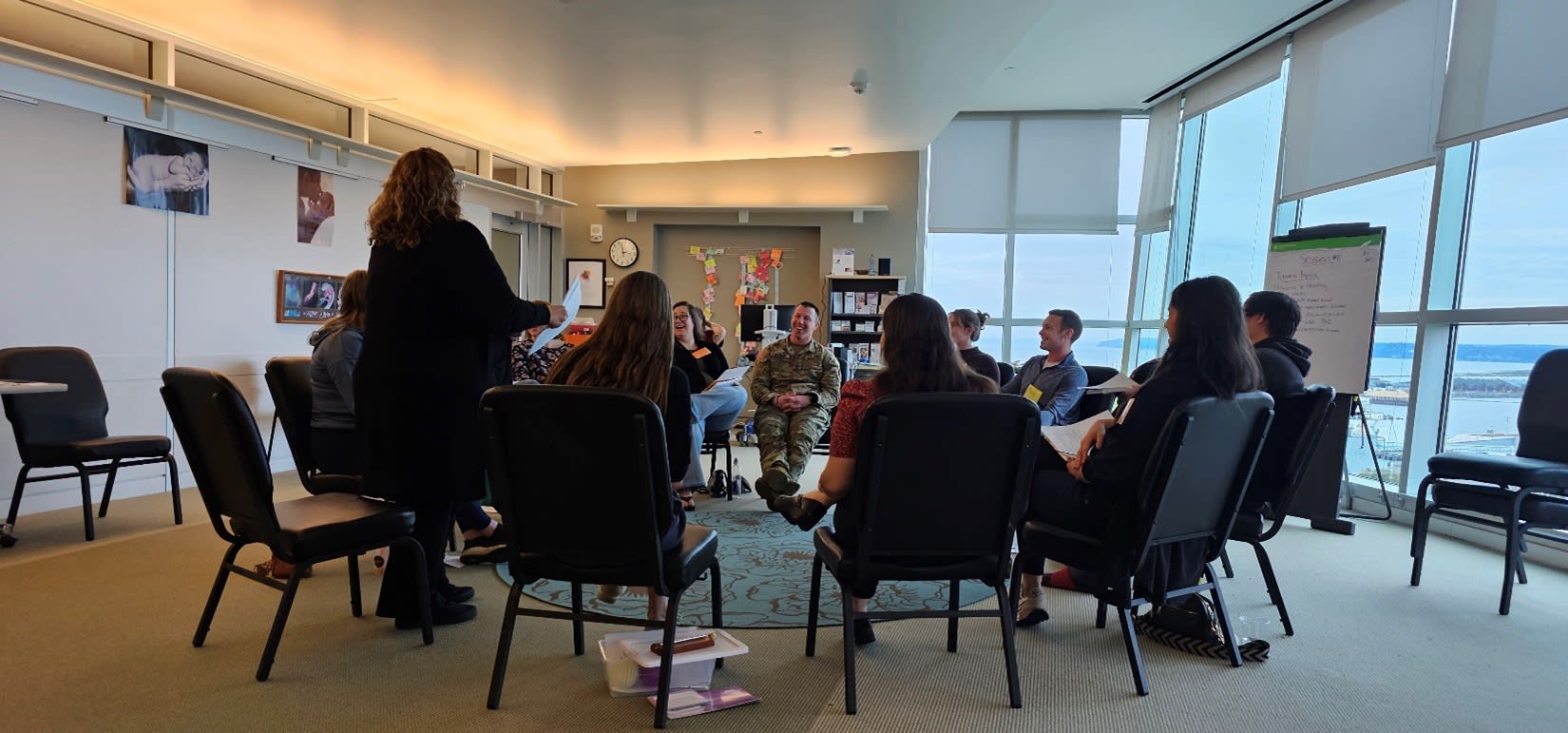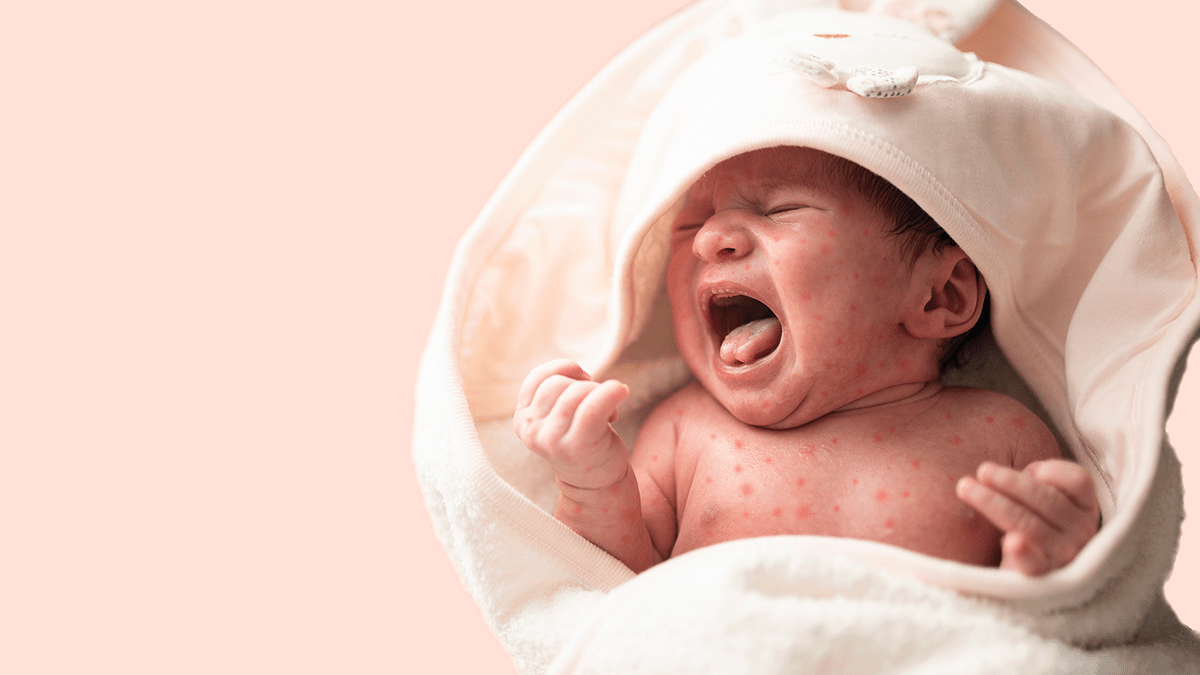Clinical trials matter, just ask Randy
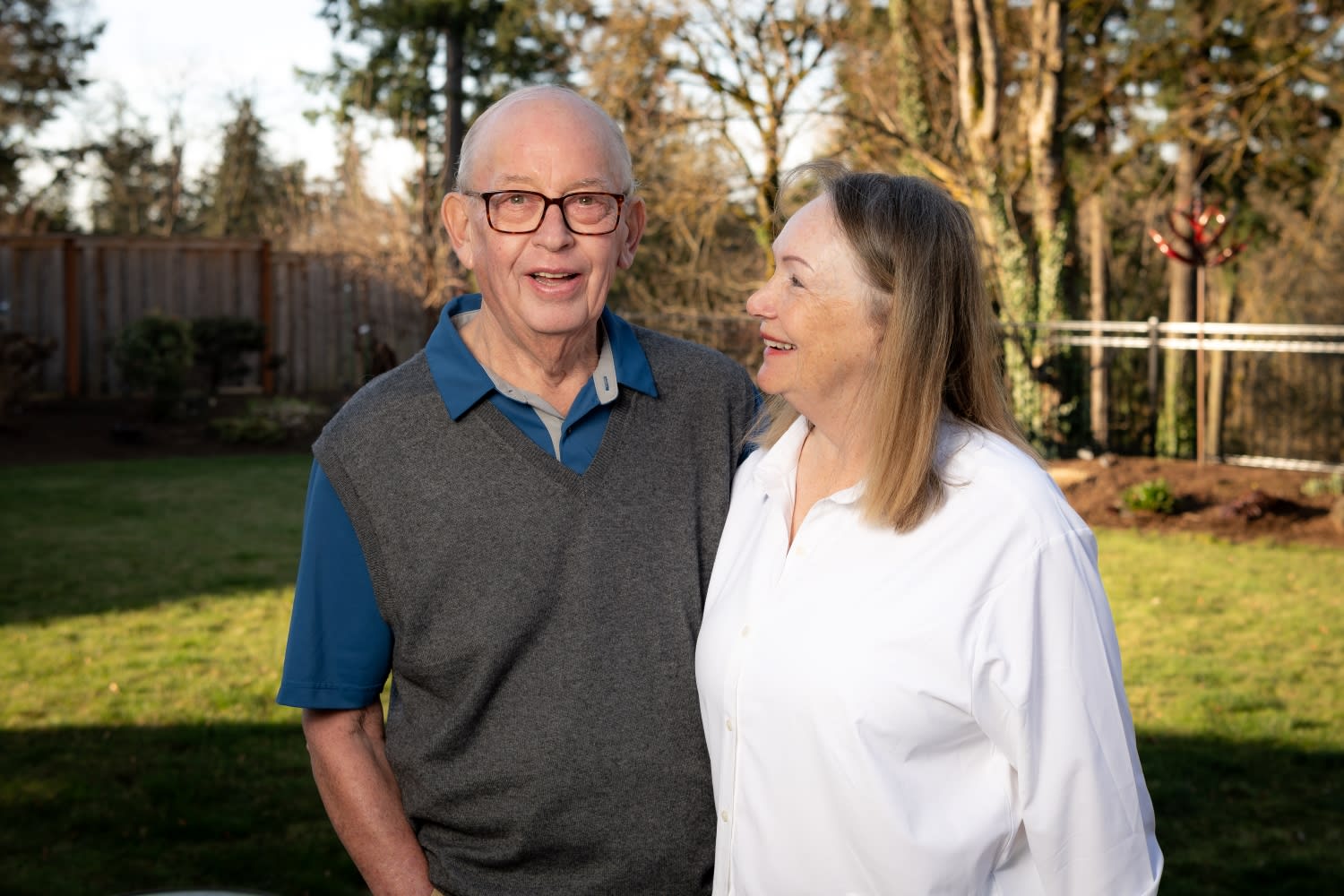
When Randy Ridgley learned his small cell lung cancer had spread to his brain, he thought it was the end of his life. But a phase I clinical trial gave him something he didn’t expect—more time with his grandkids and a new puppy.
Small cell lung cancer is a fast-growing type of cancer that primarily strikes older adults. It can spread quickly, often to other parts of the body.
After receiving his cancer diagnosis in 2022, Randy was referred to Rachel Sanborn, M.D., medical director of the Providence Thoracic Oncology Program and the Phase I Clinical Trials Program at Providence Cancer Institute, for treatment.
First in the world to receive the treatment
Randy received radiation therapy to shrink the brain tumors at Providence Clackamas Radiation Oncology Center. Then he was given chemotherapy and immunotherapy.
Eventually, the treatment stopped working for him. Knowing his options were running out, Randy enrolled in a phase I clinical trial at Providence Cancer Institute. It was a leap of faith, but one that changed everything.
The trial evaluates the effectiveness of combining two experimental medications. When Randy enrolled in September 2024, he was the first person in the world to receive the treatment combination.
“The strategy is to try to improve my quality and length of life. There is no cure for the cancer I have and there never will be if we don’t do clinical trials,” he says.
What is a phase I clinical trial?
 Phase I trials are often a last resort for patients with aggressive cancer. Understanding how they work is important.
Phase I trials are often a last resort for patients with aggressive cancer. Understanding how they work is important.
A phase I clinical trial tests new medications or a combination of medications for the first time in people. The goals of phase I trials are to carefully select a dose or schedule of treatment and to monitor for safety and side effects. According to the Food and Drug Administration (FDA), nearly 70% of medications evaluated in phase 1 trials move to phase II trials.
Phase II trials typically include more patients in groups with more specific types of cancers. Researchers build on what they learned in the phase 1 trial. The effectiveness of a phase II trial will determine if and how testing continues.
More time to enjoy life
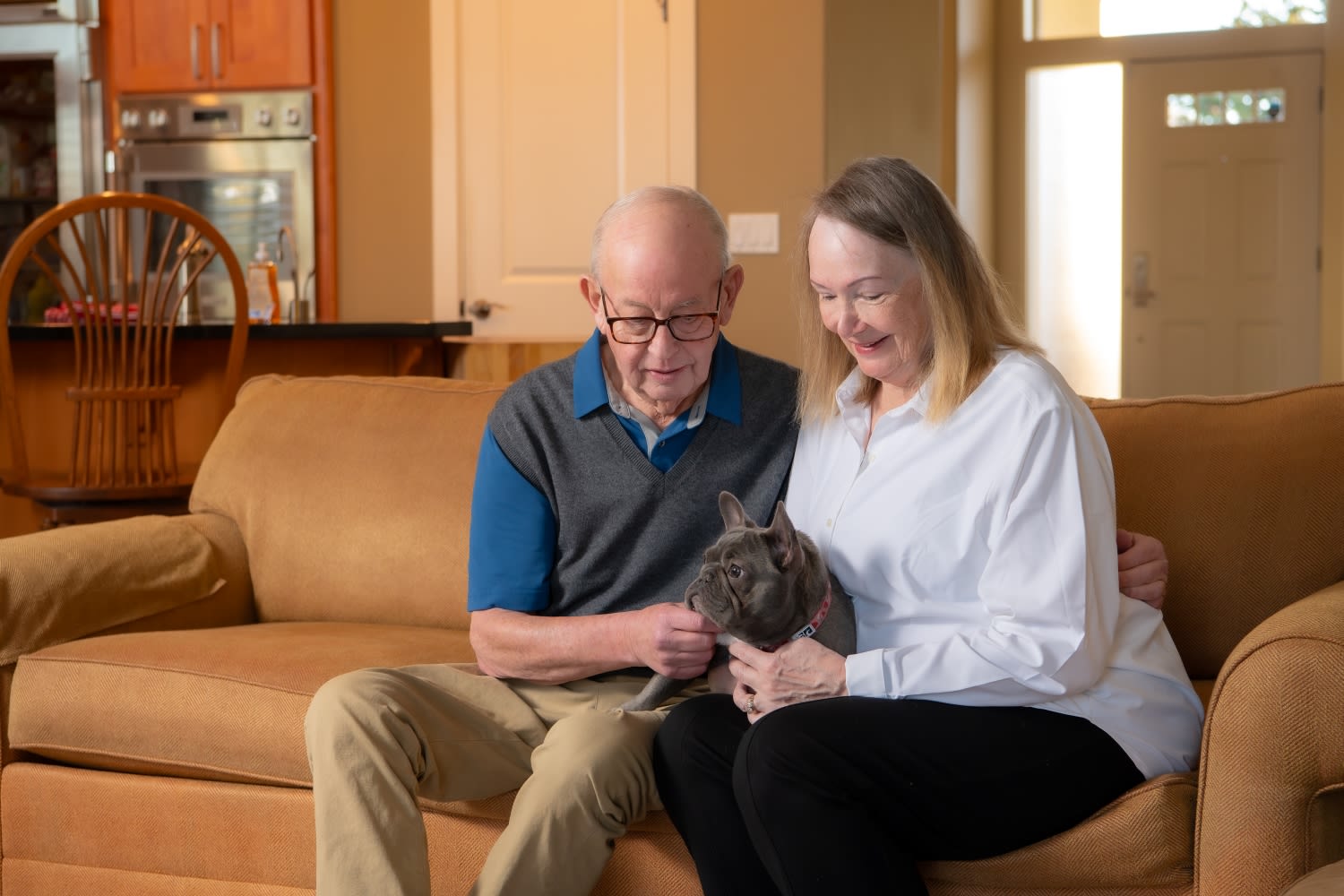
Although Randy experienced some side effects from the treatment, it was effective. The past two scans have not shown any remaining cancer.
There is still a chance for recurrence, but the clinical trial gave Randy more time to enjoy his life. “I think trials are scientifically sound. I don't think we'd be anywhere near where we are [in treating cancer] if we hadn't done something different. One hundred years ago, they used to just pat you on the head and say, ‘Get your affairs in order.”
Grateful for good care and donors
Randy heaps accolades on Dr. Sanborn and the caregivers at Providence Cancer Institute. “They've been terrific,” he says. He’s also grateful to the donors who help make clinical trials and research possible.
“Thank goodness there are philanthropists in the world that are willing to participate and give to folks like me and others. There are a lot of cancer patients here that couldn’t afford to do anything on their own, so it's great to know that there are people in the world who are kind.”
To learn more or make a gift, visit Providence Foundations of Oregon.
Providence Cancer Institute: A center of excellence
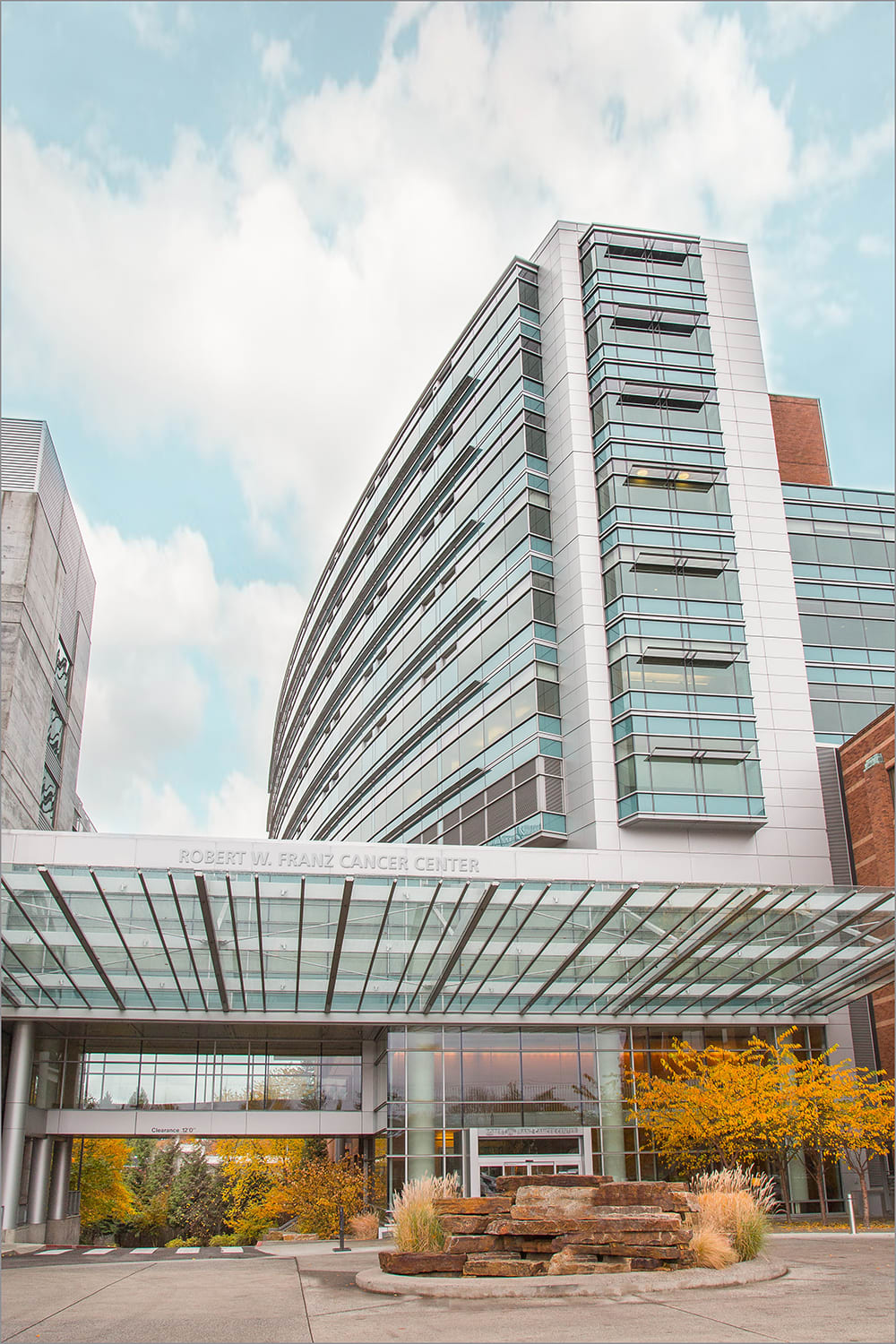 In 2024, Providence Cancer Institute earned recognition as one of Becker’s Hospital Review Top 100 hospitals and health systems for excellence in oncology. Our scientific and clinical researchers develop novel immunotherapies, enhance the basic understanding of the biology of cancer and translate those findings into effective new treatments for patients. Most of our trailblazing research is supported by philanthropy. Your gifts advance the fight against cancer and give hope to cancer patients and their families. Discover more about the leading-edge research and clinical trials at Providence Cancer Institute.
In 2024, Providence Cancer Institute earned recognition as one of Becker’s Hospital Review Top 100 hospitals and health systems for excellence in oncology. Our scientific and clinical researchers develop novel immunotherapies, enhance the basic understanding of the biology of cancer and translate those findings into effective new treatments for patients. Most of our trailblazing research is supported by philanthropy. Your gifts advance the fight against cancer and give hope to cancer patients and their families. Discover more about the leading-edge research and clinical trials at Providence Cancer Institute.
Related news
From life-saving surgery to back on the slopes: A photographer’s story
CAR T cell-therapy, hope and healing: Dean’s story
Cancer survivor speaks with doctor he credits for saving his life
